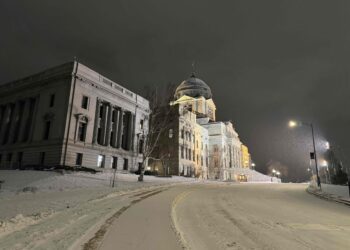By Molly Absolon Writers on the Range
Sometimes you hear a crack or a roar. More often the first sign is snow shifting around your feet. The snow starts in a slab and then breaks into blocks that knock you off your skis, careening down in a slide moving as fast as 60 to 80 mph. If you’re lucky, you live through it, plastered with snow. If not, you’re entombed, hurtled over a cliff, killed.
There have been 36 avalanche fatalities in the U.S. this winter, a streak of avalanche deaths not seen since 1918.
The accidents all occurred at a time when forecasters had rated the avalanche danger considerable or high. Both ratings mean avalanches are likely and travel in avalanche terrain is not recommended, and yet people, including me, chose to venture out despite the warnings. The question is, why?
Research shows that people push the limits of safety in pursuit of a reward, usually in the form of a flush of dopamine. Dopamine is a neurotransmitter that is released when your brain is expecting pleasure. All of us seek it out in some form. For winter recreationists like me, powder skiing—which at its best feels like flying—is the ultimate dopamine high.
“Dopamine is how we use positive reinforcement to train dogs,” writes Jake Hutchinson, in the April 2021 issue of The Avalanche Review. Hutchison is an avalanche educator based in Utah. “In the same way, it unwittingly trains us. Each ski run we take that doesn’t have consequences subconsciously reinforces our behavior.”
Snow is often described as a “wicked” learning environment, a term first used by psychologist Robin Hogarth in 2015. He says a learning environment is like a game of chess, where rules are rigid, the board and pieces visible, and feedback immediate. “Kind” learning environments allow people to learn from their mistakes. But in wicked environments, feedback is delayed or nonexistent; people never learn.
Backcountry skiing is thus a classic wicked environment. Every time you successfully ski a slope without it avalanching, the lesson you take away is “OK, you made a good decision.”
This winter, many skiers became cautious because of the dangerous snowpack and were able to safely recreate even when avalanches were a concern. Others pushed the envelope, and while most got away with it, 36 people went from the euphoria of a powder run to the terror of being caught in an avalanche.
“We so well understand the rewards of powder skiing, but we as humans fail to grasp the consequences,” says Drew Hardesty, a forecaster for the Utah Avalanche Center. “The subconscious mind does not know death… and on a visceral plane, it remains this esoteric concept… But who among us has experienced the absolute joy and ecstasy of a powder run? Yes, that would be all of us.”
Avalanche educators believe that their efforts over the past 10 to 15 years have had a positive effect in reducing avalanche accidents. Even as numbers of backcountry winter recreationists have risen, avalanche fatalities have been flat or even decreased in recent years. Per capita, the likelihood of dying while skiing in the backcountry still remains rare. Yet deaths by avalanche always make headlines, leaving non-skiers to question what can seem like reckless behavior.
“I don’t know anyone who’s stood at the top of a slope and thought, ‘Well, this could kill me, but it’s going to be epic powder skiing!’” says Jenna Malone, an avalanche educator and physician’s assistant in Salt Lake City.
“All of us who ski tour have loved ones, families, people who care about us. No powder turn is worth the pain we would cause them by dying in an avalanche, and on a deep level we all know that. We go anyway. We believe that with training, a solid ski partner who calls us on our blind spots, planning and good decision-making, we can make it safer.”
All of us rationalize our choices. It can be easy to call someone’s decisions foolhardy or risky, especially when we don’t understand what they are doing. We backcountry recreationists are aware of the potential danger of our sport, but like anyone who puts on a seatbelt when they get in a car, we take steps to minimize our exposure.
Unfortunately, some mistakes will always be tragic.
Molly Absolon is a contributor to Writers on the Range.org, writersontherange.org, a nonprofit dedicated to spurring lively conversation about the West. She subsidizes her passion for outdoor recreation by writing books and articles from her home in Victor, Idaho.












